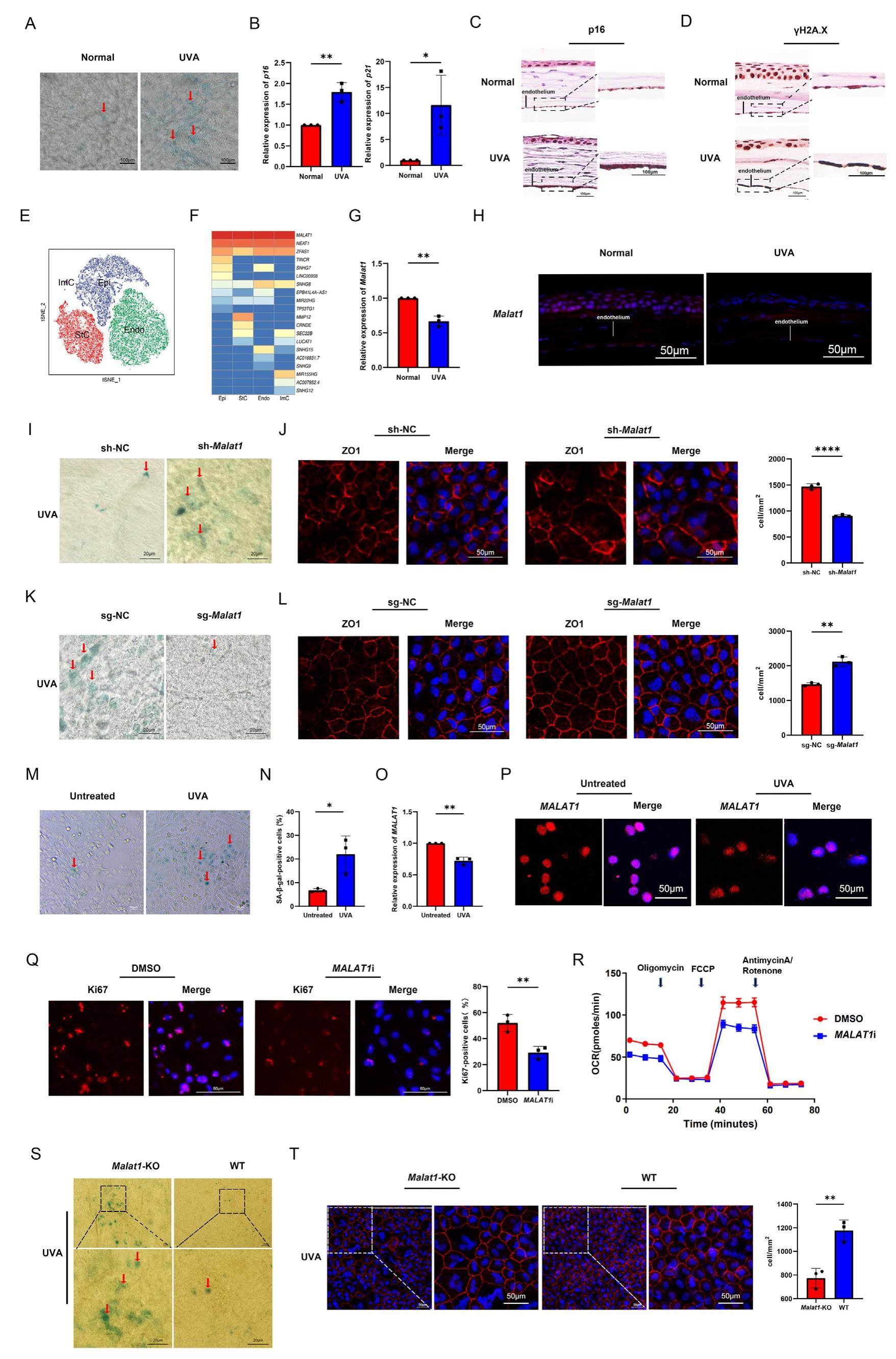
Role of lncRNA MALAT1 in UVA-induced corneal endothelial senescence


The corneal endothelial monolayer is responsible for maintaining corneal transparency through its barrier and pump functions. Endothelial cells do not proliferate in vivo, and aging-related reductions in cell density make the endothelium fragile. However, the molecular mechanism associated with the aging corneal endothelium remains elusive. In this study, we used ultraviolet A (UVA)-light-induced senescence to mimic the degenerative endothelial changes during aging. MALAT1, the most abundant long non-coding RNA (lncRNA) gene in the cornea, was markedly down-regulated after UVA irradiation. The inhibition or activation of Malat1 expression genetically led to the aggravation or remission of the cellular aging phenotype after UVA irradiation. Furthermore, an in vitro model established by the human corneal endothelial cell line (HCEC) recapitulated the morphological and molecular changes during aging, encouraging the investigation of the underlying mechanisms. We observed changes in the mitochondrial bioenergetic profiles of HCECs accompanied by extensive cell aging and reduced reproductive capacity after MALAT1 was silenced by gene-targeting ASOs. Finally, Malat1 knockout (KO) aggravated mouse corneal endothelial senescence and dysfunction, which reinforced our conclusions. Our findings indicate that MALAT1 may contribute to the delay of aging processes involving endothelial cells and provide a new therapeutic target for treating aging-related corneal endothelium disorders.
